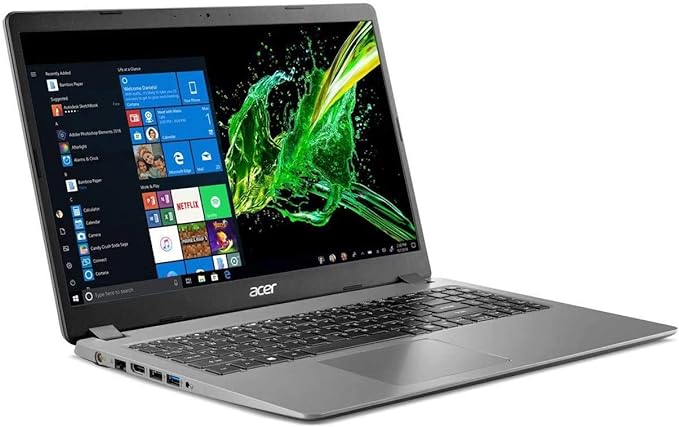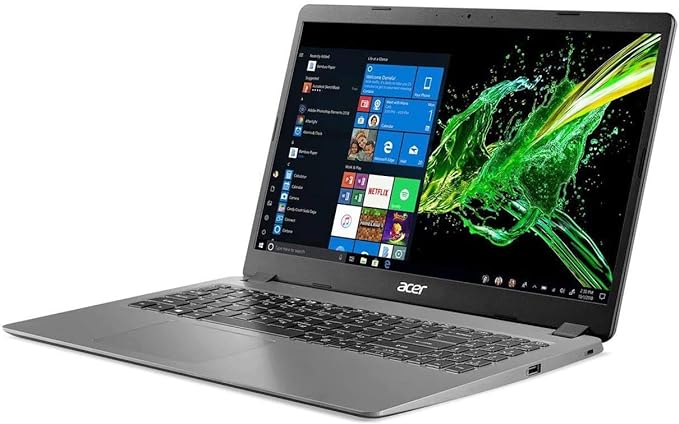Acer Aspire 3: Specs and features
Modestly spec’d with a 2.4GHz AMD Ryzen CPU, 8BG of RAM, and a 128GB solid-state drive, the Aspire 3 is no workhorse, but packs enough punch to get things done on a budget. You’ll find a
..See More
Acer Aspire 3: Specs and features
Modestly spec’d with a 2.4GHz AMD Ryzen CPU, 8BG of RAM, and a 128GB solid-state drive, the Aspire 3 is no workhorse, but packs enough punch to get things done on a budget. You’ll find an HDMI port for connecting to external displays and a single USB-C port for hooking up newer accessories and devices.
- CPU: Quad-core 2.4GHz AMD Ryzen 7320U
- Memory: 8GB
- Graphics/GPU: AMD Radeon
- Display: 15.8-inch LED-backlit LCD
- Storage: 128GB
- Connectivity: 1 HDMI Port, 2 USB 3.2 Gen 1 ports, 1 USB 3.2 Gen 2 Type-C port
- Networking: IEEE 802.11ax Wi-Fi
- Biometrics: None
- Battery capacity: 40 watt-hour
- Dimensions: 0.74 inches x 14.3 inches x 9.4 inches
- Weight: 3.97 pounds
What’s missing from these specs that you might miss? An SD card reader would be nice, as would a second USB-C port. Getting by with just one of those is going to be a drag from time to time, but you can always plug in an adapter to add more.
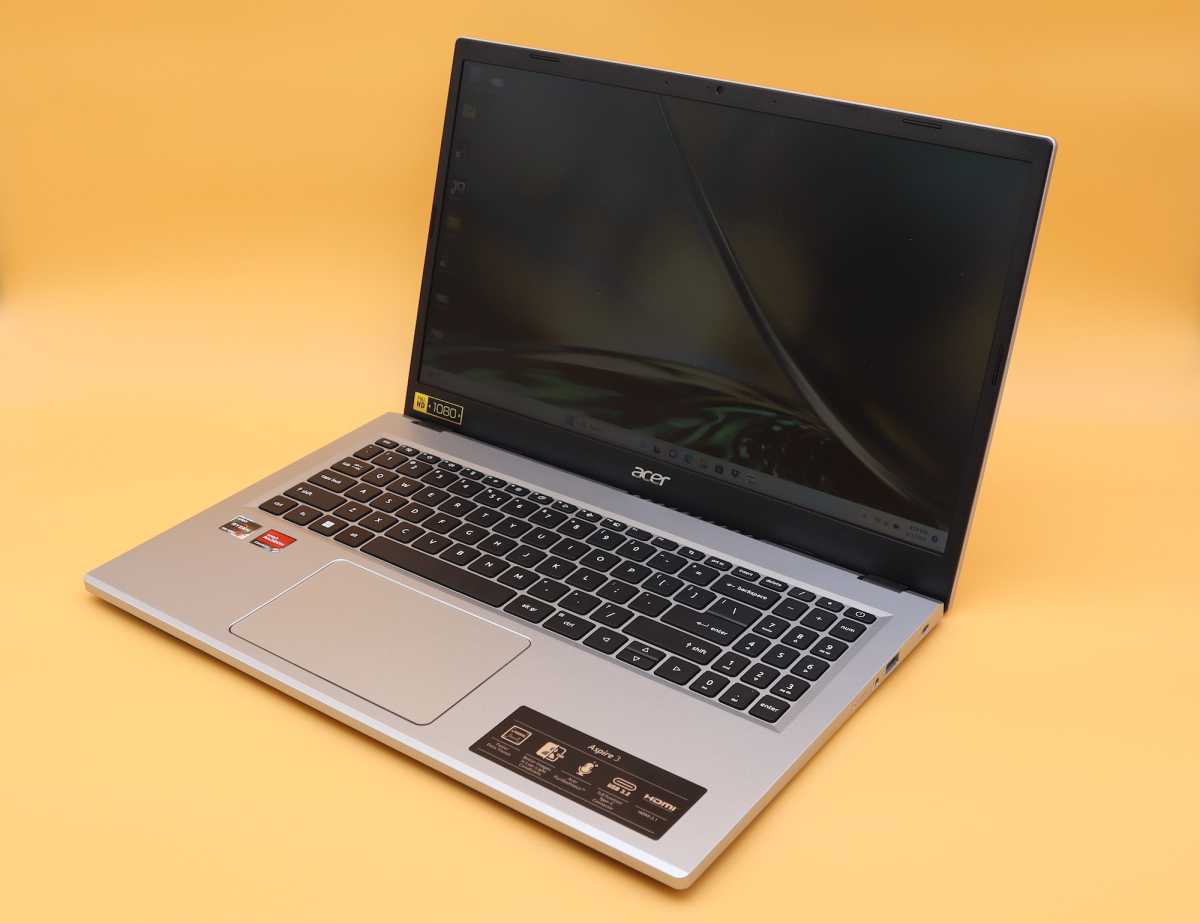
Acer Aspire 3: Design and build quality
Weighing in at just under four pounds, the Aspire 3 isn’t exactly lightweight, but in exchange for maybe an extra quarter-pound of carry weight, you get a wide 15.8-inch enough room for that full-width keyboard. As someone who lives and dies by the spreadsheet I’m a sucker for a number pad on my keyboards, so getting one on such an affordable machine is pretty sweet. This keyboard feels fairly solid under the fingers, without too much flex or bounce in heavy typing. That matters, because budget machines often sacrifice chassis structure to cut costs, and the results can feel flimsy and even lead to bounce on the track pad, causing the mouse cursor to bounce around the screen. But no such worry on this Acer; it’s actually a pleasure to type on.
In front of that wide keyboard, we find a relatively spacious 3-inch by 5-inch touchpad. Unlike those of other Acer laptops we’ve tried, this trackpad feels firm and smooth to the touch, and responds with a decisive, but quiet, click. We found it tracks well with both single-digit and multi-touch gestures.
Though somewhat bulky at roughly 3/4 of an inch in thickness, the Aspire 3 makes room for a healthy array of ports. The entire laptop looks and feels substantially more solid than most other sub-$500 laptops we’ve tested. It’s a machine fit for a working adult, not a cheap, plastic kid’s computer. Our only significant complaint with the build quality is that the screen wobbles a bit when we move it around while open, rather than sitting firm. This means the webcam image will wobble during use if you move the device, which we experienced in our testing.
Acer Aspire 3: Display and audio
Acer’s budget laptops, including the Aspire 5 we reviewed last year, have long stood out for their 1080p displays. The Aspire 3 comes similarly equipped, though as the market advances the competition is bringing the same resolution to their budget lines as well, so it no longer stands out from the crowd on this front. That said, if you’re buying a laptop in 2023, 1080p is the lowest resolution a buyer should accept, since 768p barely fits most modern web pages in their native resolution. Responsive web design is nice and all, but if your 15-inch laptop screen triggers a minimized layout with the browser window maximized, you might as well be browsing on an iPad Mini.
The Aspire 3 puts you squarely in the acceptable resolution range for current devices, but as I said, that’s the bare minimum we’d want at this point. Overall, we liked the look of the Aspire 3’s display for movies and video. Color quality was decent, though unremarkable, and bright enough for comfortable use in full sun.
A pair of small, downward-pointing speakers kick out fairly loud audio that we found well tuned for video conferencing and YouTube videos, but just a little tinny for any music with much bass.
Acer Aspire 3: Webcam and microphone
In videoconferencing tests, the Aspire 3 blew away our expectations for an economy laptop. The HD webcam produced crisp, clean video and the mic picked up and filtered voices from the background noise quite well.
Side by side with a Macbook Pro, we particularly liked the Aspire 3’s low-light webcam performance. Equipped with Temporal Noise Reduction, the high-def cam cleans up otherwise grainy low-light video and increases the exposure levels to deliver a bright, crisp image that outperforms most of the other built-in webcams we’ve tried, even on much pricier computers.
Similarly, the mic cleans up in-room audio with Acer PurifiedVoice software that filters out noise and sends clear, crisp sound to your recipient. For a computer in this price range, that’s saying a lot. Overall, with its image and voice capture quality, we’d rather jump on a Zoom with the Acer Aspire 3 than with some machines at quadruple the price.

On its left side, the Aspire 3 has a DC power portm a USB-C port, a full-size HDMI port, and a USB-A port.
Acer Aspire 3: Connectivity
One upside of a bigger laptop is the capacity for a lot of useful connectors. Along the left side you’ll find the DC in, a single USB-C port, a full-size HDMI port, and a USB-A port. On the right, you get a Kensington lock port, another USB-A, and a headphone jack. What you don’t get at this price is a second USB-C port, which is becoming common on better laptops these days, or a card reader slot.
For most users, this complement of ports will be plenty and getting both a USB-C and a full HDMI port on a $400 laptop isn’t bad. If you do need to read an SD card, you can always plug an adapter into one of the USB ports.
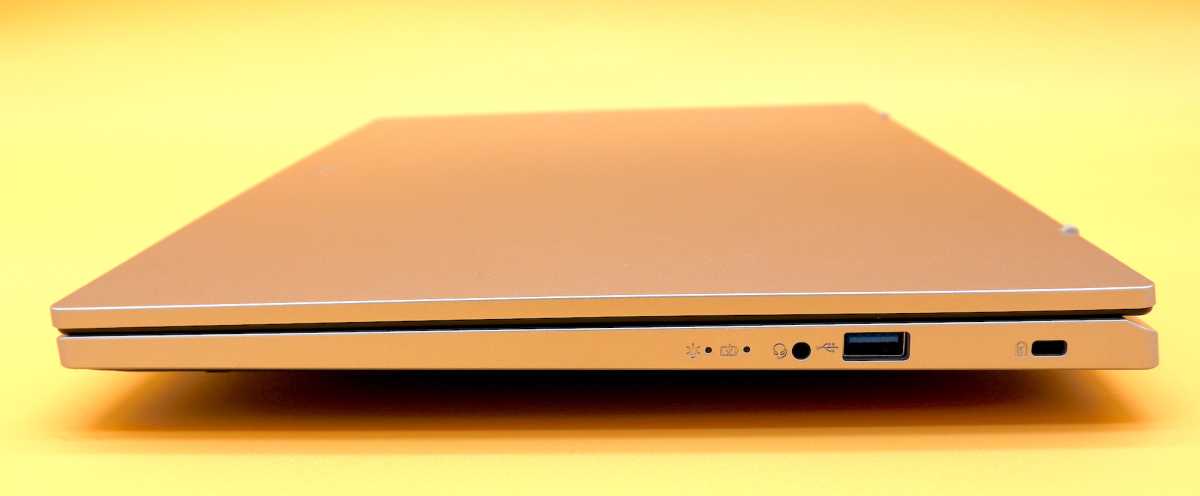
The right side of the Aspire 3 offers a Kensington lock port, a USB-A port, and a headphone jack.
Acer Aspire 3: Performance
If you’re spending $400 on a laptop, you should temper your performance expectations considerably. With its Quad-core 2.4GHz AMD Ryzen 7320U process and Radeon graphics, the Acer Aspire 3 is no exception, delivering decent performance in basic business tasks, but notably sub-par results for graphics and gaming.
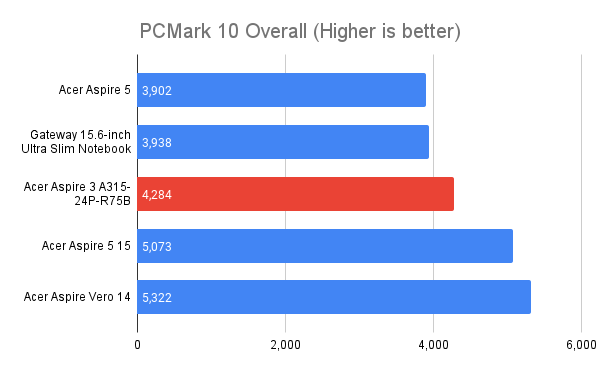
See Less
 Uganda
Currency Settings
Help
Log out
Uganda
Currency Settings
Help
Log out
